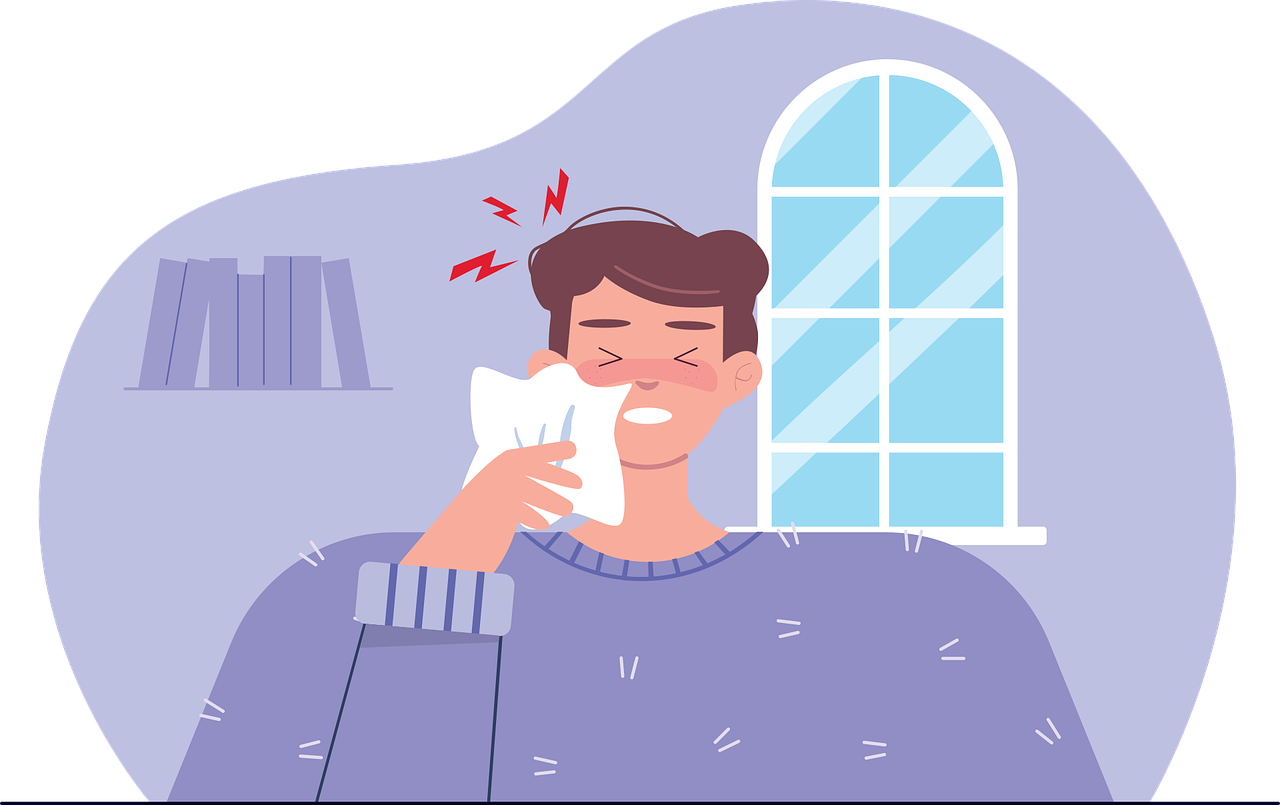In this step-by-step guide on “How to Relieve Cold and Flu Symptoms with Home Remedies,” you are provided with effective natural remedies to help alleviate the discomfort caused by cold and flu. The purpose is to offer practical solutions to individuals who prefer natural remedies over conventional medication. By following this guide, you can find relief from symptoms such as a sore throat, stuffy nose, cough, and fatigue, using readily available ingredients and techniques that are safe and easy to use at home.
Step 1: Stay Hydrated
To stay hydrated and help relieve congestion, it is important to drink plenty of fluids. Here are some tips to keep in mind:
- Water: Drink water throughout the day to stay hydrated. It is recommended to consume at least 8 glasses of water daily. This helps in thinning mucus and keeping your nasal passages moist, which can ease congestion.
- Herbal tea: Enjoying a warm cup of herbal tea can provide relief from congestion. Opt for teas such as peppermint, chamomile, or ginger, which have soothing properties and can help clear your airways.
- Electrolyte-rich beverages: In addition to water, consider consuming electrolyte-rich beverages like sports drinks or coconut water. These beverages contain electrolytes such as sodium and potassium, which aid in maintaining hydration levels and replacing essential nutrients lost during congestion.
Remember, maintaining hydration is crucial when dealing with congestion. By drinking fluids like water, herbal tea, and electrolyte-rich beverages, you can alleviate congestion and promote overall comfort. Stay hydrated to keep your body functioning optimally during this time.
Step 2: Get Enough Rest
To ensure a swift recovery from cold or flu symptoms, it is crucial to prioritize getting enough rest. Resting allows your body to recharge, recover, and heal more effectively. Here’s what you need to do to ensure you get plenty of rest:
- Sleep: Aim for at least 7-9 hours of uninterrupted sleep each night. Create a comfortable sleeping environment by keeping the room dark, quiet, and at a cool temperature. Avoid using electronic devices such as smartphones or laptops before bedtime, as the blue light emitted can disrupt your sleep.
- Take naps: If you’re feeling fatigued during the day, take short power naps of around 20-30 minutes. Napping can help restore energy levels and improve cognitive function, allowing your body to heal faster.
- Prioritize relaxation: Engage in activities that promote relaxation, such as deep breathing exercises, meditation, or gentle stretching. These practices can help reduce stress levels and promote better sleep quality.
- Limit physical exertion: While exercise is generally beneficial, it is important to listen to your body when you’re sick. Avoid intense workouts or demanding physical activities that can strain your immune system. Instead, opt for light exercises like gentle walks or stretches, which can help improve blood circulation and alleviate symptoms.
- Minimize mental stress: Stress can hinder the healing process. During your recovery period, try to minimize unnecessary mental stressors. This may involve delegating tasks, setting boundaries, or practicing stress management techniques like mindfulness or journaling.
By following these steps and prioritizing rest, you’re giving your body the time and energy it needs to combat the cold or flu and get back to optimal health. Remember, getting enough rest is crucial in allowing your body to recover and heal effectively.
Step 3: Gargle with Saltwater
To gargle with saltwater, follow these simple steps:
- Prepare the saltwater solution:
- Measure 1/4 to 1/2 teaspoon of salt.
- Add the salt to a glass of warm water (8 ounces or 240 milliliters).
- Stir the mixture until the salt is completely dissolved.
- Take a sip of the saltwater solution:
- Tilt your head back slightly, ensuring the solution does not spill out.
- Take a small sip of the saltwater into your mouth.
- Gargle the saltwater:
- Gently swish the saltwater around in your mouth.
- Lean your head forward slightly to avoid swallowing the solution.
- Make a “gargling” sound by exhaling air from your throat, causing the solution to move around the back of your throat.
- Continue gargling for 15-30 seconds.
- Spit out the saltwater:
- Lean your head over a sink.
- Open your mouth and let the saltwater mixture flow out.
- Do not swallow the saltwater.
- Repeat as necessary:
- Repeat the process every few hours or as needed to soothe your sore throat and reduce inflammation.
- It is generally safe to gargle with saltwater multiple times a day.
Gargling with warm saltwater can help reduce inflammation, ease discomfort, and temporarily relieve a sore throat. It works by drawing out excess fluids from the throat tissues, reducing swelling, and loosening mucus or phlegm. Remember, this is a home remedy and not a substitute for medical advice. If your symptoms persist or worsen, it is advisable to consult a healthcare professional.
Step 4: Use Steam Inhalation
To relieve congestion and ease breathing, inhaling steam can be highly effective. Here’s a simple step-by-step guide on how to do it:
- Prepare a bowl of hot water: Fill a heat-resistant bowl with hot water. Make sure the water is hot enough to create steam but not boiling.
- Add essential oils (optional): If desired, add a few drops of essential oils such as eucalyptus or peppermint to the water. These oils can help further open up the airways and provide a soothing effect.
- Position yourself: Find a comfortable and safe spot where you can sit or stand. Place the bowl on a stable surface and make sure it is at a height that allows you to comfortably inhale the steam. Alternatively, you can also take a hot shower and let the steam fill the bathroom.
- Cover your head with a towel: Lean over the bowl, ensuring that your face is at a safe distance from the hot water. Drape a large towel over your head, creating a tent-like shape that covers both your head and the bowl. This will help to trap and direct the steam towards your face.
- Inhale deeply: Slowly and deeply inhale the steam through your nose. Take long, steady breaths, focusing on drawing the steam deep into your lungs. Allow the warmth and moisture to soothe and loosen the congestion in your sinuses, throat, and chest.
- Take breaks: You can take breaks between inhaling sessions to avoid feeling lightheaded or overheated. It’s important to listen to your body and adjust as needed.
Remember, steam inhalation should not be used by individuals with certain medical conditions, such as asthma or heart problems, without consulting a healthcare professional first. Additionally, be cautious with the hot water to avoid burns.
Step 5: Try Honey and Lemon
Mixing honey and lemon in warm water can be an effective remedy for soothing a cough and providing relief for a sore throat. To prepare this remedy, follow these simple steps:
- Boil a cup of water and allow it to cool slightly until it is warm but not too hot.
- Squeeze the juice of half a lemon into the warm water.
- Add one or two teaspoons of honey to the mixture.
- Stir well until the honey is completely dissolved.
- Take small sips of the honey and lemon mixture, allowing it to coat your throat as you drink.
- Repeat this remedy two to three times a day, or as needed, until your cough and sore throat symptoms improve.
Honey acts as a natural cough suppressant and has antimicrobial properties that can help fight off infections. Lemon, on the other hand, is rich in vitamin C and antioxidants, which can boost your immune system and soothe your throat. By combining these two ingredients in warm water, you create a soothing and healing mixture that can provide relief for your cough and sore throat.
Step 6: Use Nasal Irrigation
Using a saline nasal spray or a neti pot can be highly effective in relieving nasal congestion and sinus pressure. These methods work by flushing out excess mucus and allergens from the nasal passages, providing instant relief and helping to clear the sinuses.
To use a saline nasal spray, start by tilting your head slightly forward. Insert the nozzle of the spray bottle into one nostril, making sure it is aimed towards the back of your head. Gently press the spray bottle to release a mist of saline solution into your nostril. Repeat this process with the other nostril. It is important to follow the instructions provided with the nasal spray to ensure proper usage.
If you prefer to use a neti pot, begin by filling it with a saline solution. Lean over a sink and tilt your head to one side. Place the spout of the neti pot into the upper nostril and slowly pour the saline solution into your nostril. The solution will flow through the nasal passages and out of the other nostril. Make sure to breathe through your mouth during this process. Repeat the procedure on the other side, tilting your head in the opposite direction.
It’s important to use distilled or sterile water when preparing the saline solution for both methods to avoid the risk of infection. You can also purchase pre-made saline solutions from a pharmacy, which are safe and convenient to use.
By incorporating nasal irrigation into your daily routine, you can effectively alleviate nasal congestion, reduce sinus pressure, and promote better breathing.
Key Takeaways
In conclusion, we have discussed various home remedies that can effectively alleviate cold and flu symptoms. By following the tips outlined in this blog post, such as staying hydrated, getting enough rest, and trying out natural remedies like gargling with saltwater, using steam inhalation, honey and lemon, and nasal irrigation, you can find relief from the discomfort of cold and flu. These remedies are easily accessible, cost-effective, and can be used in conjunction with medical treatments if necessary. Remember to always consult a healthcare professional if your symptoms worsen or persist. Stay healthy!

